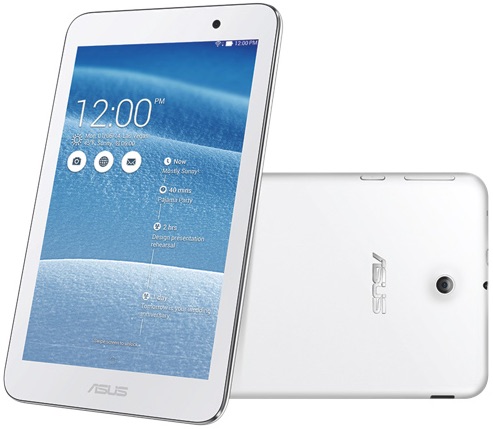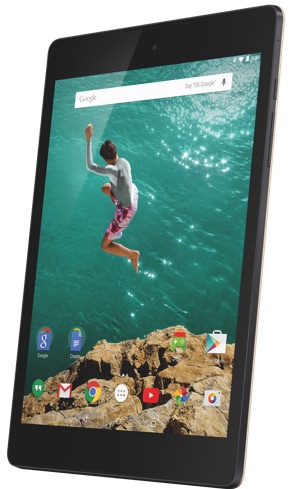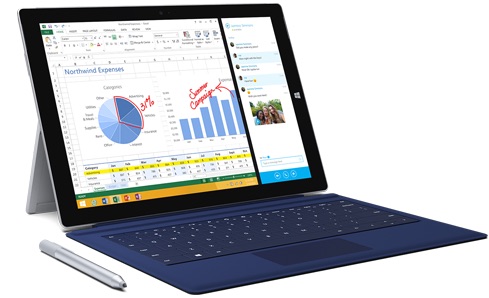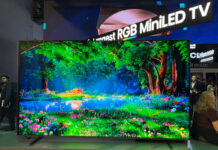
There are many different strategies that can be used when picking a tablet. For example, it’s always a good idea to know what you might use the tablet for before choosing one. Often, it just comes down to price and your budget. Today, manufacturers are offering tablets ranging in price from under $100 to over $1,000. The choice can be overwhelming, but I’ll try to make things easier with my pick from each of the most popular price categories. This is by no means definitive —your preferred operating system will obviously make a big difference— but it’s a start.
Less Than $100: Hipstreet 9-inch 8GB Flare
Believe it or not, it is possible to get a tablet for under $100 that will run Android. The Hipstreet 9-inch 8GB Flare runs Android 4.0, offers a 9-inch 800 x 480 touchscreen display, Wi-Fi and rechargeable lithium polymer battery. It’s as basic as you can get, but capable of surfing the web, running apps and with its microSD card slot, you can load the Hipstreet Flare up with music or movies for mobile entertainment.
 $100 to $199: Asus 7-inch 16Gb MeMo Pad
$100 to $199: Asus 7-inch 16Gb MeMo Pad
This is one of the better values out there, a sub-$200 tablet that has the looks and performance usually found in more expensive version. Asus manufactured the original Google Nexus 7 tablet and that expertise has been carried over into the 7-inch 16Gb MeMo Pad. Its quad-core Intel CPU with 1GB of RAM provides the power to run Android KitKat and the energy efficiency for 9-hour battery life. The MemoPad has 16GB of built-in storage and offers dual cameras. The 1280 x 800 pixel IPS LED display is perfect for mobile gaming and the tablet is compact enough to be easily carried around.
$200 to $299: Google Nexus 7 16GB
It’s tough to beat the 16GB Google Nexus 7, one of the most popular tablets of all time. It’s getting a little long in the tooth but the 1.5GHz quad-core Snapdragon S4 Pro processor and 2GB of RAM mean this tablet will be able to keep up for a long time yet. The 7-inch display has 1920 x 1200 resolution, making images and video incredibly sharp. For gaming and other apps, mobile video or snapping a quick photo, the Nexus 7 is a solid choice that combines performance and affordability.
$300 to $399: HP Omni 10
This isn’t the tablet for everyone —it won’t run Android or iOS apps. But the HP Omni 10 should be on the radar of anyone who wants a Windows tablet. You’ll find a competent quad-core Intel CPU inside along with 2GB of RAM and 32GB of built-in storage. That’s everything you need to run Windows 8.1 smoothly. Productivity applications aside, the Omni 10 has a beautiful and big 10-inch, Full HD display making it a well suited to watching videos or web surfing. It also has the expected extras like dual cameras, Bluetooth 4.0 and Wi-Fi. The microHDMI port lets you hook the Omni 10 up to an HDTV, the microSD card slot lets you inexpensively expand storage and it offers 8.5 hours of battery life.
$400 to $499: 8.4-inch Samsung Galaxy Tab S
Samsung makes what seems like dozens of tablets and they’re all solid performers. But when it comes to the $400 to $499 price point, the 8.4-inch Samsung Galaxy Tab S is an easy recommendation. That 8.4-inch OMLED display is a WXQGA (1600 x 2560 pixel) stunner and the octa-core CPU means any apps you run will be smooth. A fingerprint scanner with Multi-User support and Kids mode also make this a great tablet for sharing among family members.
 $500 to $599: HTC Nexus 9
$500 to $599: HTC Nexus 9
Another crowded price band, $500 to $599 is where you’ll find many of the most popular full-sized tablets. I’m skipping some of the more obvious and larger choices to go with the new kid on the block: the HTC Nexus 9. The 8.9 display means this one’s a little easier to carry around —without getting too small to easily read documents. For Android fans, this would be the ultimate “compact” tablet: high resolution display, powerful new 64-bit nVidia Tegra K1 CPU, 8MP primary camera, front facing stereo speakers with BoomSound, 32GB storage, Gigabit Wi-Fi and Android Lollipop.
$600 to $699: 64 GB Apple iPad Air 2
You may have been wondering where the new iPad Air 2 was in this list. Yes, there is a less expensive version, but if you’re going to buy one of these, you want the 64GB model. Storage isn’t upgradable on iPads, so better to have more than to run out later. . Besides offering an unbeatable selection of compelling tablet apps, the 64 GB Apple iPad Air 2 offers many features that put it at the top of the pack in this price range, including: anti-reflective display, high-powered A8X CPU, 8MP iSight camera (with features like burst mode, super slo-mo, time and HD panorama) and the Touch ID sensor. When it comes to accessories, iPads always have a huge selection. The Apple iPad Air 2 also comes in gold…
$700 to $799: 64 GB Apple iPad Air 2 with Wi-Fi + Cellular
What’s this, two wins in a row for the iPad Air 2? Actually, this price band is all Apple (you can check). And if I was spending this much cash, I wouldn’t get 128GB of storage over 64GB, I’d opt for the 64 GB Apple iPad Air 2 with Wi-Fi + Cellular. Still lots of storage in an awesome tablet, but with LTE for mobile connectivity.
$800 to $899 and $900 and Up: Microsoft Surface Pro 3

I’m going to cheat a little and combine these two categories because frankly, there’s only one tablet to consider when you’re looking at spending over $800: The Microsoft Surface Pro 3. This is the device that truly blurs the lines between tablet and PC. The Surface Pro 3 has the portability of a tablet, but with the choice of a Core i3, Core i5 or Core i7 CPU, it packs the power of a PC. It runs Windows 8.1 and you can add accessories like a Type Cover to virtually turn it into a notebook. I wouldn’t buy something this big or expensive for couch surfing, but the Surface Pro 3 is the ultimate productivity tablet.
Unlike 2010 when tablets first went mainstream, there are now hundreds of choices. Just as important, there are options to suit virtually any budget, not just those with $500 to spend.





I have to agree Brad the 8.4-inch Samsung Galaxy Tab S is a great unit at a reasonable price. The OMLED screen is quite awesome.
I am an apple fanatic. I own the 64 GB Apple iPad Air 2. If you are an avid tablet tv show and movie watcher it is a necessity.
Some thoughts about those budget tablets with 8gb of memory….
When I got my 8gb tablet, I said it was plenty. Until I started to use the camera on a holiday…. that 8gb quickly filled up. No wonder smartphones are now 32, 64, and 128gb.
I find 8 inch or smaller tablets are great for travel. Larger tablets are better for inside the house.
Do you have issues typing on glass? Looking for a case with a keyboard makes a huge difference.
I hear you on the memory thing -that’s one of the reason why that HipStreet Flare got the under $100 nod. It’s only 8GB of built-in storage, but it has a microSD card slot, so you can use inexpensive cards up to 32GB for additional storage.
Comments are closed.